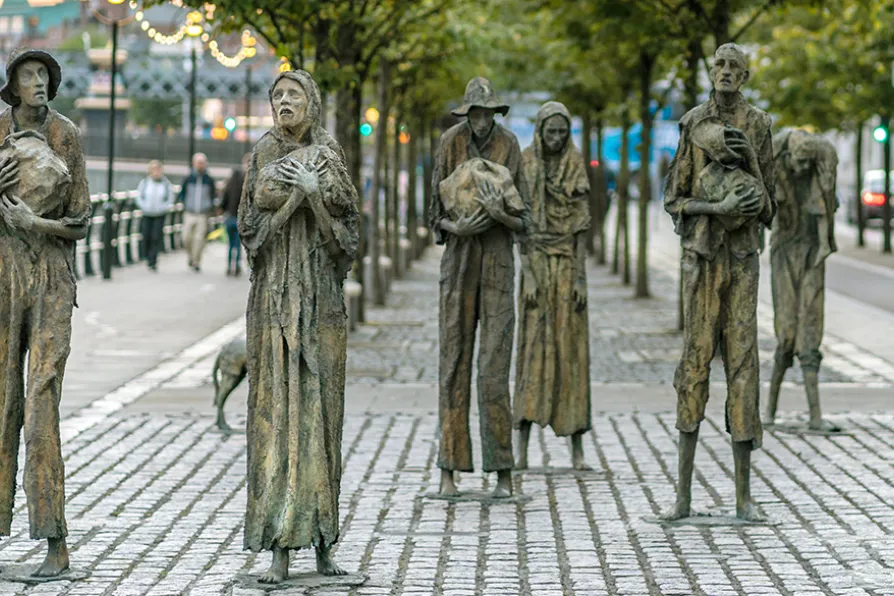RICHARD MURGATROYD enjoys a readable account of the life and meditations of one of the few Roman emperors with a good reputation
Irish Famine Memorial, Custom House Quay Dublin


THE POTATO famine in Ireland began in September 1846 and its consequences were so shattering that it is ingrained in the Irish psyche to this very day.
More than a million people died over the following few years, when hunger and disease became omnipresent. Up to a quarter of the population emigrated, mostly to North America.
Although potato blight was the direct cause of the crop failure of Ireland’s staple food, there was also a political dimension which exacerbated the tragedy.
Similar stories

From colonialism to the Troubles, the story of England’s first colony is one of exploitation, resistance, and solidarity — and one we should fight to ensure is told, writes teacher ROBERT POOLE

ROGER McKENZIE reflects on the enslavement, endurance and rebellion of Africans trafficked across the Atlantic and the untold sufferings of unknown ancestors

JENNY FARRELL pays tribute to the late Michael Longley, whose poetry, forged in the time of The Troubles, speaks to today’s wars

Sculptors offer their advice on what makes for a good depiction in the eyes of the art world and the public










